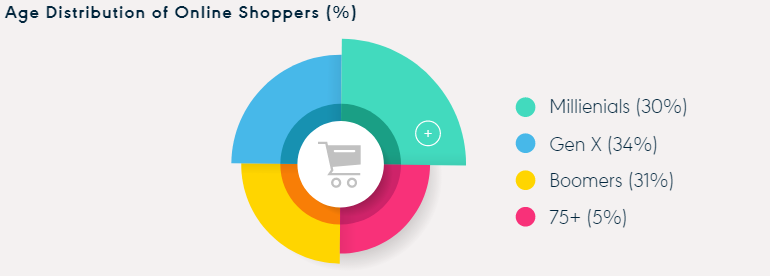MENA eCommerce Statistics and Opportunities for 2021 | Expandcart
E-Commerce & Retail | Middle East
Everything shifted with the COVID-19 pandemic, including customers’ plans and shopping behaviors, which in turn has shifted the 2020 and 2021 eCommerce market greatly along with the typical consumer journey.
Without further ado, let’s go through this MENA eCommerce statistics report.
The MENA Market in Numbers
The Middle East and North Africa region has always shown and keeps showing incredible promise when it comes to its eCommerce market.
Not only has its volume grown from $18.6 billion in 2016 to $41.5 billion in 2020 (projected to grow to $49 billion in 2021), but it also annually grows at a higher rate than that of Europe and Asia – with Egypt, the UAE, Saudi Arabia, and Kuwait dominating the market.
- Electronics, fashion, beauty, and grocery are MENA’s most popular segments and constitute 80% of the region’s eCommerce market.
- In 2020, the most popular payment method for online shoppers was Cash on Delivery since the MENA remains to be a cash-based economy, but 57% of customers have said that if there were digital payment options available, they would be more likely to shop from that place.
- And following up from that, the year’s dominant card scheme was Visa (37%), followed by local schemes (32%), and Mastercard (29%).

How Consumers Have Been Shopping
According to the “MENA eCommerce Statistics in 2021” report, MENA consumers are considered among the most connected and digitally savvy in the world. Even if a purchase was not necessarily done online, online research post-purchase is heavily integrated by consumers into their consumer journey.
- It’s a region that is surprisingly dominated by smartphone use, with 55% of shoppers in Egypt, UAE, and Saudi Arabia shopping online using their smartphones.
- And then there’s demographics: 68% of men who shop online usually buy furniture and computers, while women (72% shop online) go predominantly for food, cosmetics, and clothes.
- When it comes to age, 18-74-year-olds make up 95% of consumers – millennials (under 34) make up only 30%, surprisingly.
- Since it’s already been mentioned, it goes without saying that smartphones make up the most favored device for online shopping, followed by desktop computers.

You can also get some help in creating a strong customer service platform with LiveChat.
2020’s Top eCommerce Trends Were:
Based on the “MENA eCommerce Statistics in 2021” report, 2020’s top eCommerce trends were:
- Influencers
- User-generated content
- Personalization
- Youth
- Artificial reality and virtual reality
The Table of Contents of “MENA eCommerce Stats and Opportunities”
- Introduction
- Section 1: eCommerce in the Middle East – Statistics and Trends
- Section 2: Consumer Behavior in MENA at a Glance (Facts and Statistics)
- Section 3: Top eCommerce Trends 2020
- Conclusion
Number of Pages:
- 18 pages
Pricing:
- Free

ExpandCart
Benefits of Using ExpandCart:
- Multilingual store with native Arabic support: Your store will speak your customer’s language, you can add any language you need to grow your sales.
- Accept online payments & handle shipping with ease: You can accept online payments from all customers and deliver your products easily with the shipping method of your choice.
- Easy access to support: Get the help you need in marketing, sales, store management, website design, and much more.
- Create a beautiful online store with ease: Kick off your business immediately and expand your sales with ExpandCart’s great online marketing and SEO tools. No need for coding or design skills.
The Top Features of ExpandCart:
- Exclusive eCommerce integrations like Chatbots, messenger, and WhatsApp integrations.
- Partnerships with Facebook, Google Shopping Ads, Amazon, and Snapchat, and more enable merchants to sell everywhere.
- Free and premium website design templates
- Super easy merging your store from any platform to ExpandCart
- Basic SEO practices to optimize your reach on Google.
- Exclusive integrations with international dropshipping providers.
- Hundreds of shipping options to support local and international shipping
- Accept any kind of payments with ExpandCart’s POS system that enables you to sync your offline sales with the online and seamlessly track inventory through all your selling points.
ExpandCart Pricing:
- ExpandCart has a free package that gives you access to all essential features so that you can start and run your store and don’t worry about finances in your first steps. Learn more
- Free Package
- Professional 449 EGP/Month
- Ultimate 1299 EGP/month
- Enterprise 4999 EGP/month






